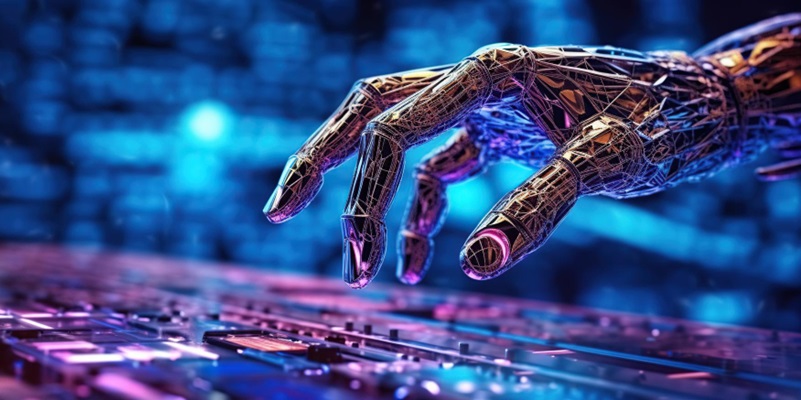In the ever-evolving realm of artificial intelligence (AI), the fusion of two powerful technologies, Natural Language Processing (NLP) and Cognitive Process Automation (CPA), signifies a groundbreaking shift in the way machines engage with human language and optimize complex business processes. This integration of NLP and CPA opens up new possibilities for AI to comprehend, interpret, and generate human-like language, as well as extract meaningful insights from intricate documents.
NLP’s Role in AI: Understanding and Generating Human-like Language
NLP is a key aspect of AI, enabling machines to comprehend, interpret, and generate human-like language. Through sophisticated algorithms and models, NLP allows AI systems to understand the nuances of language, including grammar, semantics, and context. This ability empowers machines to engage in meaningful conversations, understand user queries, and provide accurate responses.
NLP’s Versatility in Extracting Insights from Complex Documents
Besides its capabilities in language comprehension, NLP also excels in extracting meaningful insights from vast sets of structured and unstructured data. By analyzing documents, NLP algorithms can identify key information, recognize patterns, and summarize large volumes of text efficiently. This makes NLP a versatile tool for businesses dealing with intricate documents, such as contracts, legal documents, research papers, and customer feedback.
Integration of CPA with NLP for Understanding and Interacting with Human Language
At the core of CPA is NLP integration, which enables systems to comprehend and interact with human language. This integration allows AI to go beyond simple automation tasks and engage in complex conversations or perform intricate processes. CPA leverages NLP’s language understanding capabilities to interpret user commands, extract relevant information, and execute tasks accordingly. This comprehensive understanding of human language enables the development of advanced AI assistants or AI co-workers that transcend traditional automation boundaries.
Advancements Enabled by NLP-CPA Integration: AI Assistants Breaking Automation Boundaries
The seamless fusion of NLP and CPA opens up new possibilities for AI assistants. These intelligent virtual assistants can understand and respond to natural language queries, assist users with complex tasks, provide personalized recommendations, and act as collaborative partners in various domains. With NLP’s language capabilities and CPA’s ability to automate tasks, AI assistants become adept at handling complex, human-like interactions and optimizing business processes.
Leveraging AI Technologies: Machine Learning and Computer Vision
CPA leverages AI technologies like machine learning and deep learning to go beyond rule-based automation. Machine learning algorithms continuously improve performance by learning from data patterns, allowing AI systems to adapt and make accurate predictions. Additionally, computer vision broadens the scope of tasks by enabling AI to interpret visual data. This integration of machine learning and computer vision enhances the capabilities of NLP-CPA systems, enabling them to handle more diverse and complex tasks.
Continuous Improvement with Machine Learning Algorithms and Expanding Tasks with Computer Vision
Through the integration of machine learning algorithms, NLP-CPA systems continually enhance their performance. These algorithms analyze patterns in data, learn from user interactions, and improve their understanding of language over time. Meanwhile, computer vision expands the capabilities of NLP-CPA systems by enabling them to interpret images and videos, opening doors to a wide range of visually-based tasks. This amalgamation propels organizations into an era where data-driven decision-making is integral to operations.
The Impact of NLP-CPA Integration on Data-Driven Decision-Making in Organizations
The fusion of NLP and CPA revolutionizes the way organizations make decisions. By leveraging NLP’s language understanding and data extraction abilities, organizations can gain valuable insights from vast amounts of textual data. These insights can drive strategic planning, optimize operations, and improve customer experience. Coupled with CPA’s automation capabilities, organizations can streamline processes, reduce errors, and increase efficiency, leading to better decision-making and improved business outcomes.
NLP as a Linguistic Maestro for Machines in Understanding Human Language
NLP becomes a linguistic maestro, deciphering human language for machines. With NLP’s algorithms and models, machines can understand the intricacies of language, including sentiment analysis, entity recognition, and semantic understanding. This linguistic prowess enables AI systems to accurately interpret user intents, respond contextually, and simulate natural language conversations.
The Transformative Synergy of NLP and CPA in the Evolving Saga of AI
As we explore limitless possibilities, the transformative synergy of NLP and CPA stands as a testament to the evolving saga of AI, where decoding the future hinges on understanding and interpreting human language. This integration opens doors to advanced AI assistants, personalized user experiences, and optimized business processes. The combined power of NLP-CPA propels AI into a new era, where machines comprehend human language and interact intelligently, driving innovation and transforming industries.
The fusion of Natural Language Processing (NLP) and Cognitive Process Automation (CPA) represents a groundbreaking shift in the capabilities of artificial intelligence. The integration of NLP and CPA enables machines to comprehend, interpret, and generate human-like language, as well as extract valuable insights from complex documents. With advanced AI assistants, automated processes, and data-driven decision-making, organizations embark on a transformative journey where understanding and interpreting human language are critical. The future of AI hinges on the evolving saga of NLP-CPA, pushing boundaries and unlocking limitless possibilities for the advancement of technology and human-like interaction.

